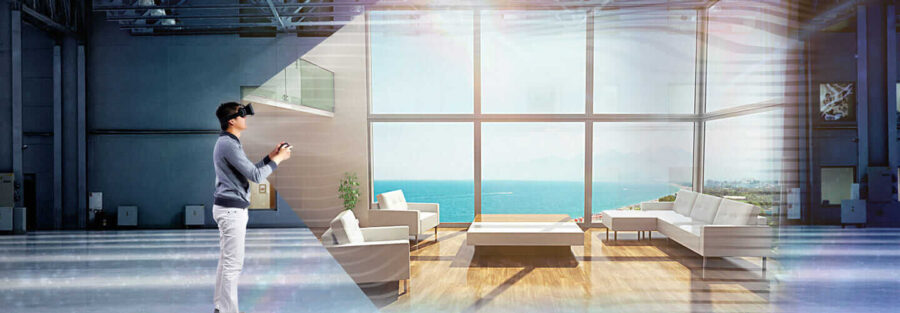Architectural visualization has come a long way from traditional 2D renderings and floor plans. With the advent of virtual reality (VR) technology, architects and designers are now able to immerse themselves and their clients in lifelike digital environments. This article explores how architectural visualization, particularly through the use of virtual reality, is transforming the way we design, communicate, and experience architectural spaces.
The Evolution of Visualization: From 2D to 3D: The evolution of architectural visualization has been marked by the transition from 2D renderings and floor plans to more dynamic and realistic 3D models. These 3D representations offer a more comprehensive view of the design, allowing stakeholders to understand spatial relationships, proportions, and aesthetic elements with greater accuracy.
Virtual Reality: Stepping into the Design: Virtual reality takes architectural visualization to a new level by offering immersive experiences. With VR technology, architects and clients can step into a virtual representation of a building before it’s even constructed. By donning a VR headset, users can navigate through rooms, assess lighting conditions, and even interact with virtual objects, providing an unparalleled sense of presence.
Benefits for Architects and Designers:
Enhanced Design Communication: VR allows architects to effectively communicate design intent to clients, contractors, and team members. Complex concepts that might be challenging to explain in traditional formats become readily understandable in a virtual environment.
Iterative Design Process: VR enables iterative design processes in real time. Architects can make modifications, observe the results instantly, and refine designs accordingly.
Spatial Understanding: Architects and designers can gain a deeper understanding of spatial relationships and ergonomics by experiencing the design at a human scale within a virtual setting.
Client Engagement and Decision-Making: Virtual reality transforms client presentations into interactive experiences. Clients can explore various design options firsthand, offering them a greater sense of involvement and confidence in the final design. This active engagement often leads to quicker decision-making and smoother project progression.
Project Visualization and Planning: Virtual reality is not limited to design presentation; it’s also a valuable tool for project visualization and planning. Contractors and construction teams can use VR to simulate construction sequences, identify potential conflicts, and streamline coordination efforts before breaking ground.
Challenges and Considerations:
Technology Adoption: While VR offers immense potential, its adoption requires investment in hardware, software, and training. Architects and firms need to weigh the costs against the benefits.
Realism and Accuracy: The effectiveness of VR hinges on the accuracy and realism of the virtual environment. High-quality models, textures, and lighting are essential for an immersive experience.
Future Outlook: The future of architectural visualization and VR holds exciting possibilities. Advancements in real-time rendering, augmented reality (AR) integration, and AI-generated content are expected to further enhance the design process, making it even more interactive, efficient, and user-friendly.
Conclusion: Architectural visualization, driven by virtual reality technology, is reshaping the way architects, clients, and stakeholders engage with design concepts. This transformative tool empowers architects to bridge the gap between imagination and reality, offering a more intuitive and immersive approach to design exploration and communication.



